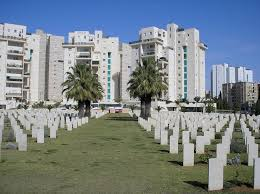One memorial window which takes the breath away is situated on the south wall of the parish church in Mattersey, Nottinghamshire. The church is one of the majority which thankfully is open during daylight hours. In fact, given the fact that the Church of England is a major custodian of the nation's heritage as the official state church, I think it is beholden on them to open all churches unless there is a compelling reason not to. But that is a topic for another day.
The window commemorates the deaths of three brothers who spent some of their youth in the quiet village. They were the sons of William and Charlotte Huntriss. William had married Charlotte in 1883 and was a successful farmer who by 1911 was living at Mattersey Hall. He died in 1912 before the war broke out. Charlotte was thirteen years younger than her husband and would live until 1939.
The quote above the figures is from Revelation 2:10 and reads:
BE THOU FAITHFUL UNTO DEATH AND I WILL GIVE THEE A CROWN OF LIFE
Underneath the tableau is the inscription:
IN EVER LOVING MEMORY OF LIEUT WILLIAM HUNTRISS, 3RD DUKE OF WELLINGTON'S WEST RIDING REGIMENT (ATTACHED TO GOLD COAST REGIMENT) BORN DECEMBER 16TH 1886; DIED OCTOBER 23RD 1918 AT COOMASSIE, AFRICA.
CAPT. HAROLD EDWARDS HUNTRISS, 1ST BATTALION BEDFORDSHIRE REGIMENT, BORN MAY 23RD 1890; DOED OF WOUNDS AT FESTUBERT, FRANCE MAY 17TH 1915.
CAPT. CYRIL JOHN HUNTRISS, 1ST BATTALION EAST YORKSHIRE REGIMENT. BORN JANUARY 23RD 1893, KILLED AT FRICOURT, FRANCE JULY 1ST 1916.
Cyril was born in Scarborough and educated at Uppingham School. He had served in France since January 1915. Cyril had won the Military Cross for conspicuous gallantry on 9th August 1915. At Hooge, Belgium, he had, `led four bombing parties up to the assault on the enemy's position with the greatest coolness and daring.' He had also been mentioned in despatches by Field Marshal Sir John French in January 1916. He was killed on the first day of the Battle of the Somme in 1916, along with nearly 20,000 other British troops. His body was never found and he is commemorated on the Thiepval memorial.
Harold was born in East Markham, Nottinghamshire. The following information comes from the website www.bedfordregiment.org.uk :
Captain Harold Edward HUNTRISS
Killed in action 17th May 1915, aged 24
 Harold was born 23rd May 1890 in East Markham, Nottinghamshire, the son of William Huntriss, J.P. and Charlotte Elizabeth Huntriss. He was educated at Uppingham between 1904 and 1908, after which Harold applied to the Sandhurst Royal Military Academy on 29 September 1908, giving his address as Mattersey Hall, Bawtry, Yorkshire.
Harold was born 23rd May 1890 in East Markham, Nottinghamshire, the son of William Huntriss, J.P. and Charlotte Elizabeth Huntriss. He was educated at Uppingham between 1904 and 1908, after which Harold applied to the Sandhurst Royal Military Academy on 29 September 1908, giving his address as Mattersey Hall, Bawtry, Yorkshire.
He was promoted to Lieutenant on 3rd May 1911 and arrived with the 2nd Battalion in France 6th October 1914. Lieutenant Huntriss was hit by shrapnel in the left thigh on the 29th or 30th October, during intense fighting east of Ypres and returned to England to recover after an operation.
Harold returned to the 2nd Battalion in April or May 1915 but was killed at the head of his Company as they advanced to the second German trench line, Major MacKenzie and Lieutenant Hutton-Williams being killed close by. All three were buried together despite the difficulties their men had recovering their bodies after the battle.
At the time of his death, he lived at Harlsen House, Belvedere Road in Scarborough, his widowed mother being his next of kin (resident at 116 Wheelwright Road, Gravelly Hill in Birmingham). There also seems to be a link to Huntriss and Huntriss Solicitors in Halifax who handled his mother's affairs, his brother William seemingly being a partner within the firm.
Lieutenant Huntriss is buried in the Guards Cemetery, Windy Corner, Cuinchy, 7km east of Bethune..
William was born in Scarborough and died on the Gold Coast (now Ghana) and died in 1918, a few weeks before the end of the war.
Their names also appear along with the others from the village who made the ultimate sacrifice on the marble tablet next to the window.
One final twist to the tale was that when I came to sign the church visitors' book, the last entry was for a Brian Huntriss from Leicestershire. I wonder if he is a relation.













